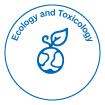Unsere Gruppe organisiert über 3000 globale Konferenzreihen Jährliche Veranstaltungen in den USA, Europa und anderen Ländern. Asien mit Unterstützung von 1000 weiteren wissenschaftlichen Gesellschaften und veröffentlicht über 700 Open Access Zeitschriften, die über 50.000 bedeutende Persönlichkeiten und renommierte Wissenschaftler als Redaktionsmitglieder enthalten.
Open-Access-Zeitschriften gewinnen mehr Leser und Zitierungen
700 Zeitschriften und 15.000.000 Leser Jede Zeitschrift erhält mehr als 25.000 Leser
Indiziert in
- Google Scholar
Nützliche Links
Open-Access-Zeitschriften
Teile diese Seite
Abstrakt
Diversity of prokaryotic and eukaryotic communities in an experimental rice planting with a history of pesticide use
Maria Pilar Serbent
Abundance and diversity of microbial communities in
an experimental rice planting with a history of pesticide
were determined using rRNA high-throughput sequencing
from samples of the affluent, rice rhizosphere soil;
storage pond sediment; and the effluent. A similarity between
aquatic environments and terrestrial environments
concerning the prokaryotic communities was observed.
This pattern differs for eukaryotic communities, where
there is a difference between the effluent (lower diversity
indexes) and the other three sites (diversity indexes
similar to those found in the sample). Proteobacteria
overwhelmingly dominated the bacterial OTUs in the affluent,
soil rhizosphere, and the storage pond sediment.
Actinobacteria dominated in the effluent. At the genus
level, the most frequent microorganism in both aquatic
locals were an Actinomycetes from the family Sporichthyaceae
followed by an OTU belonging to the Comamonadaceae
family and Polynucleobacter (Proteobacteria). A
Thaumarchaeota OTU (average 4.7%) and Geobacter
(average 3.9%) were the most abundant genera in the
rice rhizosphere and an Acidobacteria belonging to the
candidate division DA052 (average 8.8 %), followed by
a Thaumarchaeota OTU (average 6.5%) in the storage
pond sediment. The rice rhizosphere and storage pond
sediment would have better environmental quality due to
the lower content of pesticides represented by the higher
relative abundances of Acidobacteria, Nitrospirae, Gemmatimonadetes
and Verrucomicrobia, and the lower values
of Actinobacteria in comparison to the affluent and
the effluent. Not only the structure of soil microbial populations
but also those of aquatic environments would act
as indicators of environmental quality concerning pesticide
residues.
Zeitschriften nach Themen
- Allgemeine Wissenschaft
- Biochemie
- Chemie
- Genetik und Molekularbiologie
- Geologie und Geowissenschaften
- Immunologie und Mikrobiologie
- Klinische Wissenschaften
- Krankenpflege und Gesundheitsfürsorge
- Landwirtschaft und Aquakultur
- Lebensmittel & Ernährung
- Maschinenbau
- Materialwissenschaften
- Medizinische Wissenschaften
- Pharmazeutische Wissenschaften
- Physik
- Sozial- und Politikwissenschaften
- Umweltwissenschaften
- Veterinärwissenschaften
Klinische und medizinische Fachzeitschriften
- Anästhesiologie
- Augenheilkunde
- Betrieb
- Dermatologie
- Diabetes und Endokrinologie
- Gastroenterologie
- Genetik
- Gesundheitspflege
- Immunologie
- Infektionskrankheiten
- Kardiologie
- Klinische Forschung
- Medizin
- Mikrobiologie
- Molekularbiologie
- Neurologie
- Onkologie
- Pädiatrie
- Pathologie
- Pflege
- Toxikologie
- Zahnheilkunde

 English
English  Spanish
Spanish  Chinese
Chinese  Russian
Russian  French
French  Japanese
Japanese  Portuguese
Portuguese  Hindi
Hindi